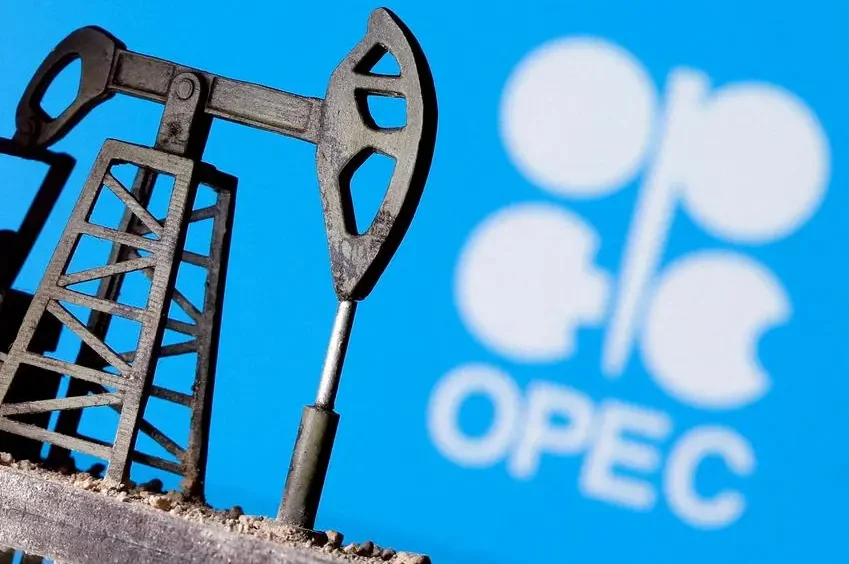Crude Oil Market Faces Oversupply and Sustainability Pressures

Houston, USA
The global crude oil market is navigating a challenging landscape in 2025, marked by a looming oversupply, volatile prices, and increasing emphasis on sustainability. With production rising and demand growth slowing, major oil companies and OPEC+ are adapting to maintain stability. This article explores the key trends shaping the crude oil market, from supply dynamics to technological advancements and geopolitical influences.
Oversupply Drives Price Volatility
Global crude oil production is projected to reach 105.8 million barrels per day (b/d) in 2025, driven by OPEC+’s decision to increase output by 548,000 b/d since August and robust non-OPEC production from the United States, Brazil, and Canada, according to the International Energy Agency. A forecasted surplus of 1.7 million b/d by early 2026 is expected to push Brent crude prices down from $68 per barrel in August 2025 to around $50 per barrel in Q1 2026. Weakening demand, particularly in China where economic growth slowed to 4.6% in Q2 2025, is exacerbating price pressures, prompting companies to focus on cost efficiency and strategic investments.
OPEC+ and Non-OPEC Production Dynamics
OPEC+ remains a key influencer, with its cautious approach to unwinding production cuts aimed at balancing market share and price stability. Saudi Arabia and the UAE are leading contributors, with Saudi Aramco targeting 12 million b/d and ADNOC aiming for 5 million b/d by 2027. Non-OPEC producers, particularly the U.S., are driving growth, with Permian Basin output expected to rise by 5% in 2025. However, the U.S. Energy Information Administration projects a 1% decline in U.S. crude production in 2026, reflecting maturing shale fields. Brazil’s pre-salt fields, producing 3.5 million b/d, are also bolstering global supply, intensifying competition.
Geopolitical Risks Disrupt Supply Chains
Geopolitical tensions are adding uncertainty to the crude oil market. The Strait of Hormuz, handling 21% of global petroleum liquids, remains a critical chokepoint, with potential disruptions threatening supply routes. Ukrainian drone attacks on Russian refineries disrupted 1.2 million b/d of capacity in 2025, causing short-term price spikes. U.S. sanctions and trade tariffs, particularly on Russian and Iranian oil exports, are reshaping trade flows, with China and India absorbing 60% of these volumes. The EU’s March 2025 ban on Russian LNG re-exports is indirectly affecting crude markets by increasing competition for alternative supplies.
Sustainability and Low-Carbon Initiatives
The crude oil industry is under pressure to align with global net-zero goals by 2050. Carbon capture, utilization, and storage (CCUS) projects are gaining traction, with ExxonMobil’s LaBarge facility capturing 8 million metric tons of CO2 annually and plans to scale to 11 million by 2028. Companies like BP are integrating renewables, using solar power to reduce emissions from crude extraction by 5% in 2024. However, a 2025 Deloitte survey indicates only 43% of executives prioritize CCUS due to high costs, limiting widespread adoption. Methane emissions reduction is also critical, with AI-driven monitoring cutting leaks by 7% at Shell’s facilities in 2024.
Technological Advancements Boost Efficiency
Technology is transforming crude oil production and refining. AI-driven seismic imaging, adopted by Chevron in the Permian Basin, has improved recovery rates by 8%, while digital twins at Saudi Aramco’s Abqaiq plant reduced downtime by 12% in 2024. The Industrial Internet of Things (IIoT) is enabling real-time monitoring, cutting pipeline losses by 5% globally. Blockchain is enhancing crude trading transparency, with QatarEnergy reporting a 7% reduction in transaction costs in 2024. In 2025, technology investments are expected to reach $15 billion, helping companies navigate price declines and competitive pressures.
Petrochemical Demand as a Growth Driver
The petrochemical sector, reliant on crude oil derivatives like naphtha, is projected to drive 18–20% of global oil demand by 2040. Saudi Aramco’s Jazan refinery is expanding to produce 1 million metric tons of petrochemicals annually by 2027, while Sinopec’s new plants target 1.5 million metric tons of ethylene. AI-driven process optimization has reduced refining costs by 7–10% in 2024, but global supply chain disruptions challenge feedstock reliability. Investments in petrochemical infrastructure, totaling $20 billion in 2025, underscore the sector’s role in sustaining crude demand.
Workforce and Industry Consolidation
Automation and digitalization are reshaping the workforce, with 10,000 jobs cut globally in 2024–2025. Retraining programs are transitioning 5,000 workers to roles in digital operations and renewables by 2027, supported by $300 million in industry-led initiatives. Mergers and acquisitions (M&A) are surging, with 70% of companies planning deals in 2025 to access technology and reserves, according to GlobalData. ExxonMobil’s $4.9 billion acquisition of Denbury in 2024 strengthened its CCUS portfolio, reflecting a broader trend of consolidation to enhance efficiency.
Outlook for 2025
The crude oil market in 2025 is defined by oversupply risks, geopolitical challenges, and a push for sustainability. Companies are leveraging AI, CCUS, and strategic investments to maintain competitiveness amid a projected price decline and shifting trade dynamics. As the industry balances economic pressures with environmental goals, its ability to innovate and adapt will shape its role in the global energy landscape through 2030.
- Gas Industry
- Oil Industry







